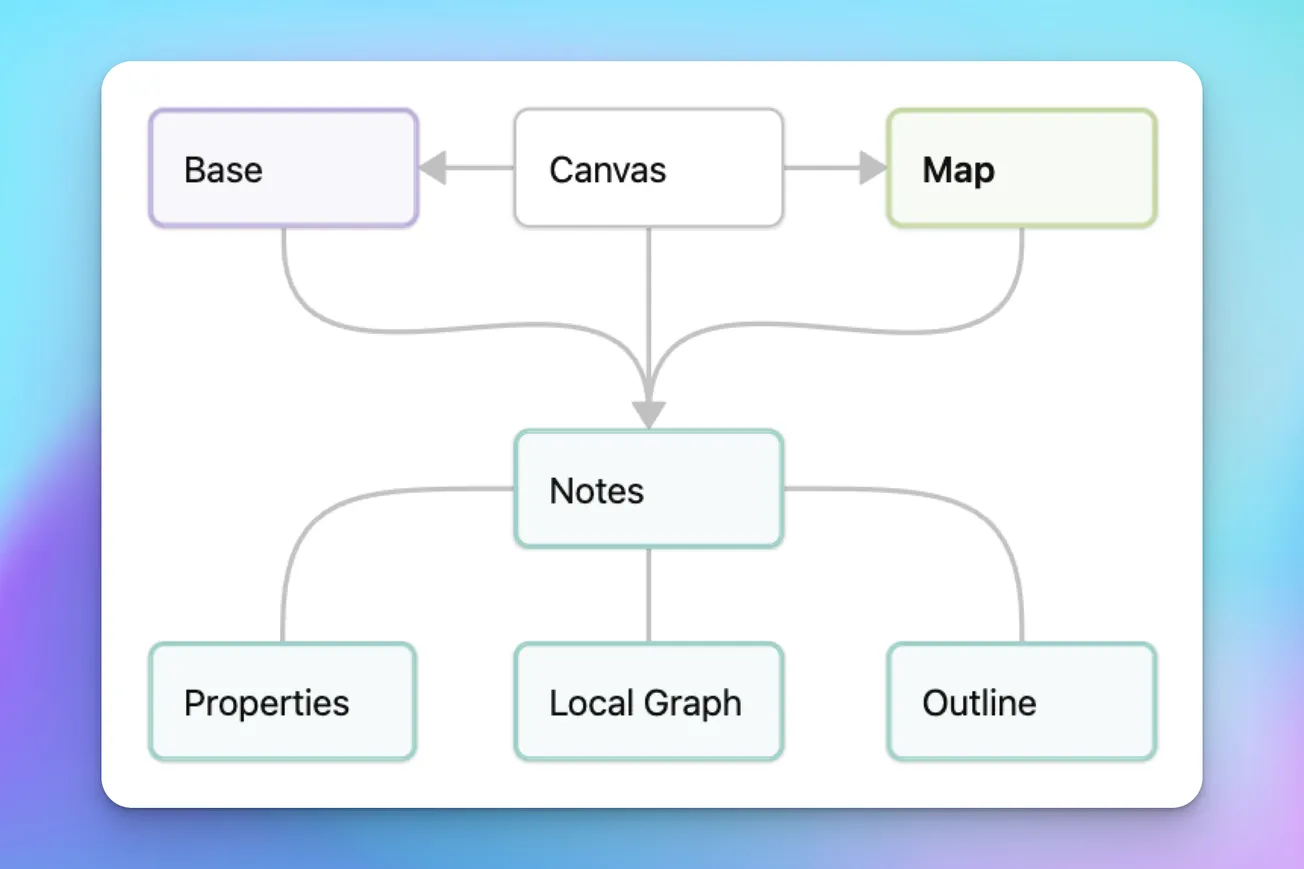In Part 1 of this series, I covered how Obsidian Bases provide a solid foundation for capturing, organizing, and managing my notes as knowledge objects.
Part 2 described how Canvas unlocks visual thinking—spatially arranging notes, making connections, and enabling ideation beyond linear writing for deeper insight and further ideation.
Now in Part 3, I focus on how Maps extend this process with a layer that brings context, structure, and navigation to collections of related notes.
This focuses on the Relate phase of the ARC ideation framework, and the Prompting, Planning, Drafting, & Crafting elements of my LYT Pipeline writing process based on WOW techniques and the Creator's Codex.
What are maps?
A Map of Content (MOC), which I prefer to simply call a map, is essentially a curated note (or structural hub)—with lists, links, and sometimes embedded canvases or diagrams—that gathers and organizes related notes around topics, efforts, or workflows.
I also like to think of different types of maps in my PKM system for apps, efforts, topics, outputs, etc. Sometimes I use them for a special transitional purpose like a workbench or focus map.
They provide knowledge dashboards that:
- Surface connections and relationships between topics.
- Guide you to relevant notes, resources, and sub-maps.
- Act as an entry point for deep exploration of ideas across clusters of related notes,
- Help plan, organize, and manage efforts, topics, apps, and/or outputs.
They are a conceptual technique that scales with my knowledge and adapts to my workflow. These maps provide the organizational structure that supports a model of my thinking that allows me to navigate ideas efficiently.
Knowledge management
Without maps, a vault can become a tangled web of notes, difficult to navigate and make sense of over time.
Maps solve this by providing:
- Context: Understanding how notes relate, both thematically and functionally.
- Structured overview: Seeing the big picture at a glance, without needing automated graphs.
- Navigation: Quickly jumping between ideas, efforts, and stages of work.
While Canvas provides flexible freedom to visualize spatially, it can become awkward for large or complex topics. Maps bring back a sense of structure and hierarchy, supporting contextual navigation, relationship layers, and efficient discovery. They transform notes from isolated objects to an organized network of knowledge.
Building effective maps
I create and maintain maps as a natural extension of my Bases and Canvas workflow.
- From Bases to maps: Bases help me manage properties in specific filtered views of my notes.
This enables me to review and change navigational links likeupandrelated, as well as categorization (structural) properties such aseffort,app,category,topic,group, andrank.It helps me identify related notes for associated maps. - Canvas to map integration: I use Canvas to organize and relate notes, cards, and images visually.
Using arrow or line connections between related elements focuses on their relationships. This allows me to identify the specific relationship that is represented by links; in some cases, it might be useful to replace a link with an link note when I want to represent more context, multiple connections, or properties about that relationship.
Using Canvas is a simple way that helps me create of model of my personal knowledge graph, which enables effective mapmaking. - Hierarchical maps: Using both Bases and Canvas helps me to identify how notes and maps should be connected hierarchically.
Besides providing structure, this supports effective access and navigation. The outline and local graph views in Obsidian also help me to create appropriate maps. - Dynamic and evolving: My maps change and evolve along with my notes. As I create or refactor related notes, patterns emerge that affect my map structure and navigation.
Summary
Maps are where structure and context come together. They help me move from raw knowledge (captured in Bases) and unstructured ideation (explored in Canvas) to organized, interconnected systems of thought.
Maps keep me oriented, enhance idea emergence, generate new insights, and turn my Obsidian vault into a knowledge landscape I can navigate with confidence.
With Bases, Canvas, and Maps working together, my writing process shifts from chaos to coherence—supporting everything from spark capture to polished publication.
As my vault grows, maps ensure that every idea can find its place within a meaningful context.
